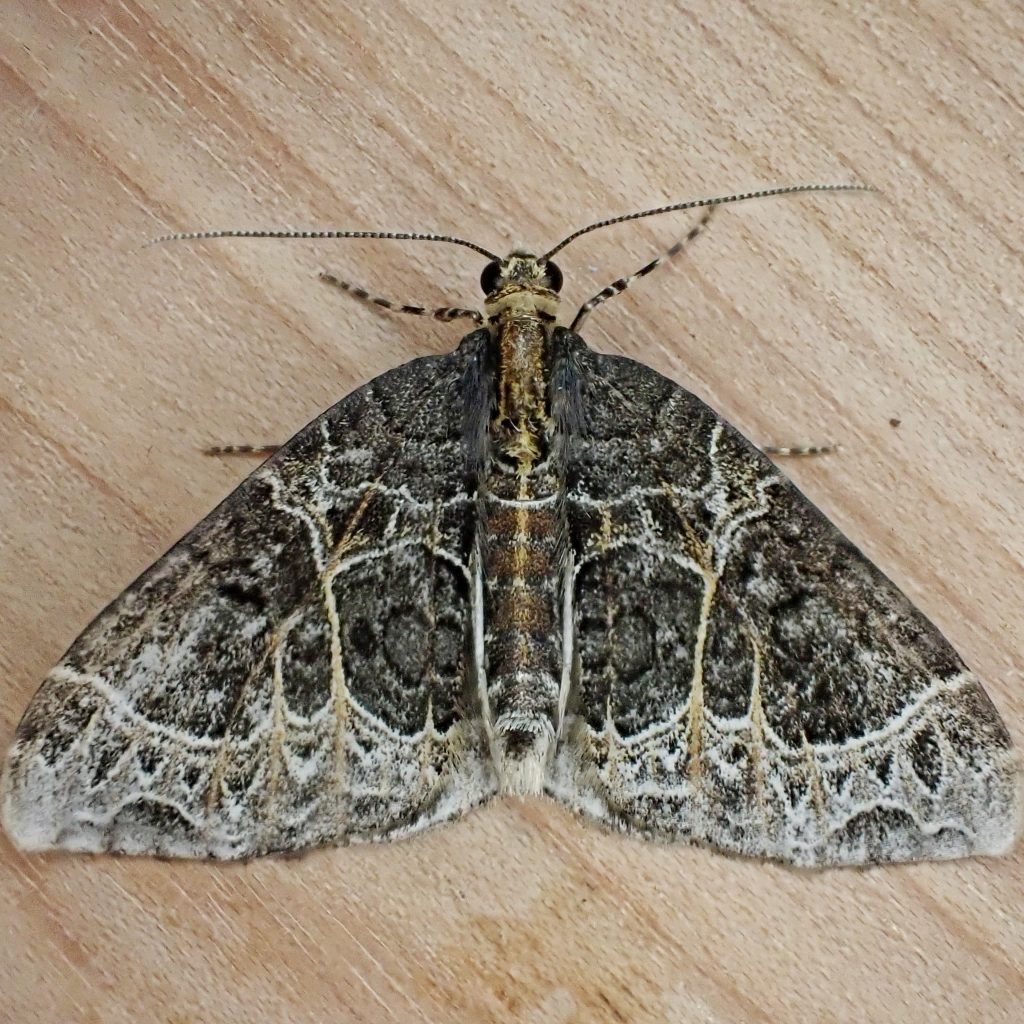
I have a special fondness for these sharply marked moths. Though they are superficially similar to several medium sized geometrids, the crispness of the markings and delineated veins make them distinct. Though they are definitely not rare, they are seldom abundant at my lights, so it feels like a treat when I do see one.
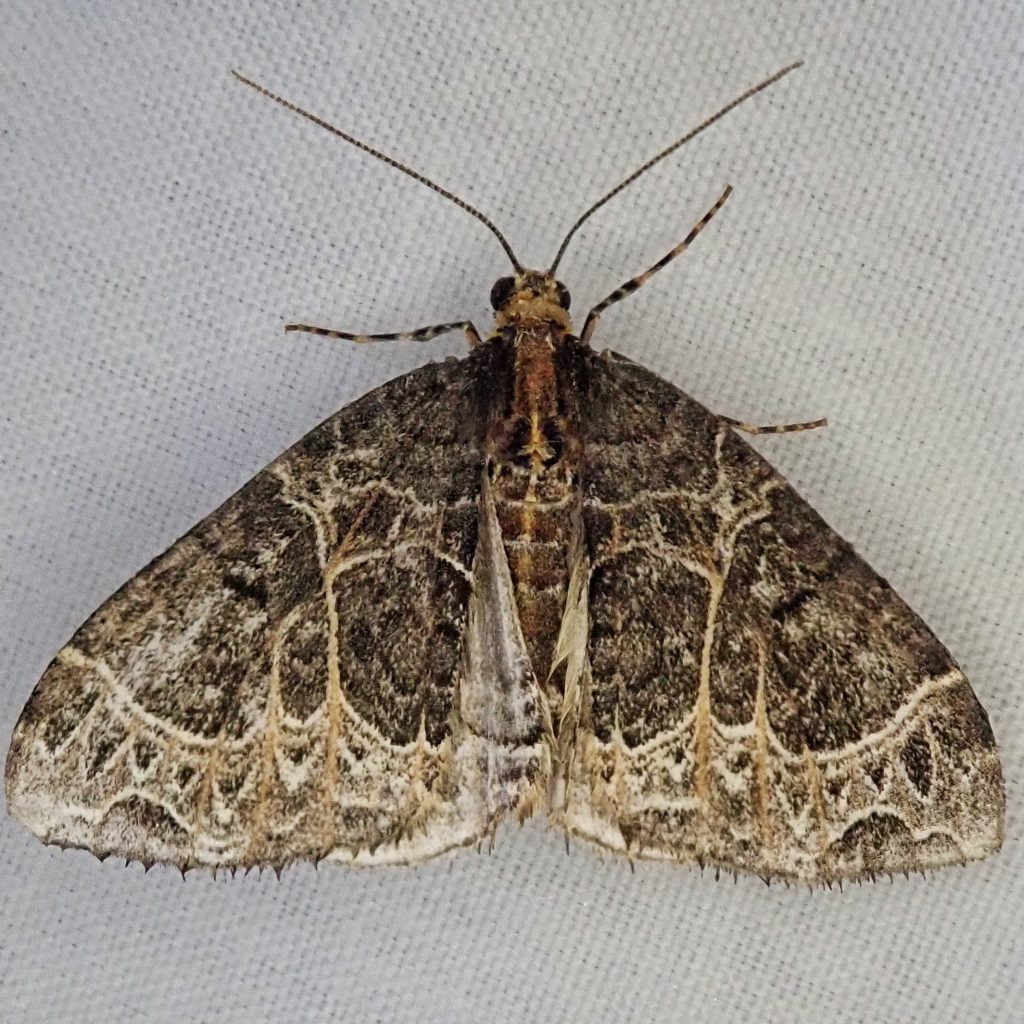
This is probably a very old (and very successful) species, since Small Phoenix can be found everywhere in the temperate parts of the northern Northern Hemisphere, and the North American plate separated from the European plate about 80 million years ago.
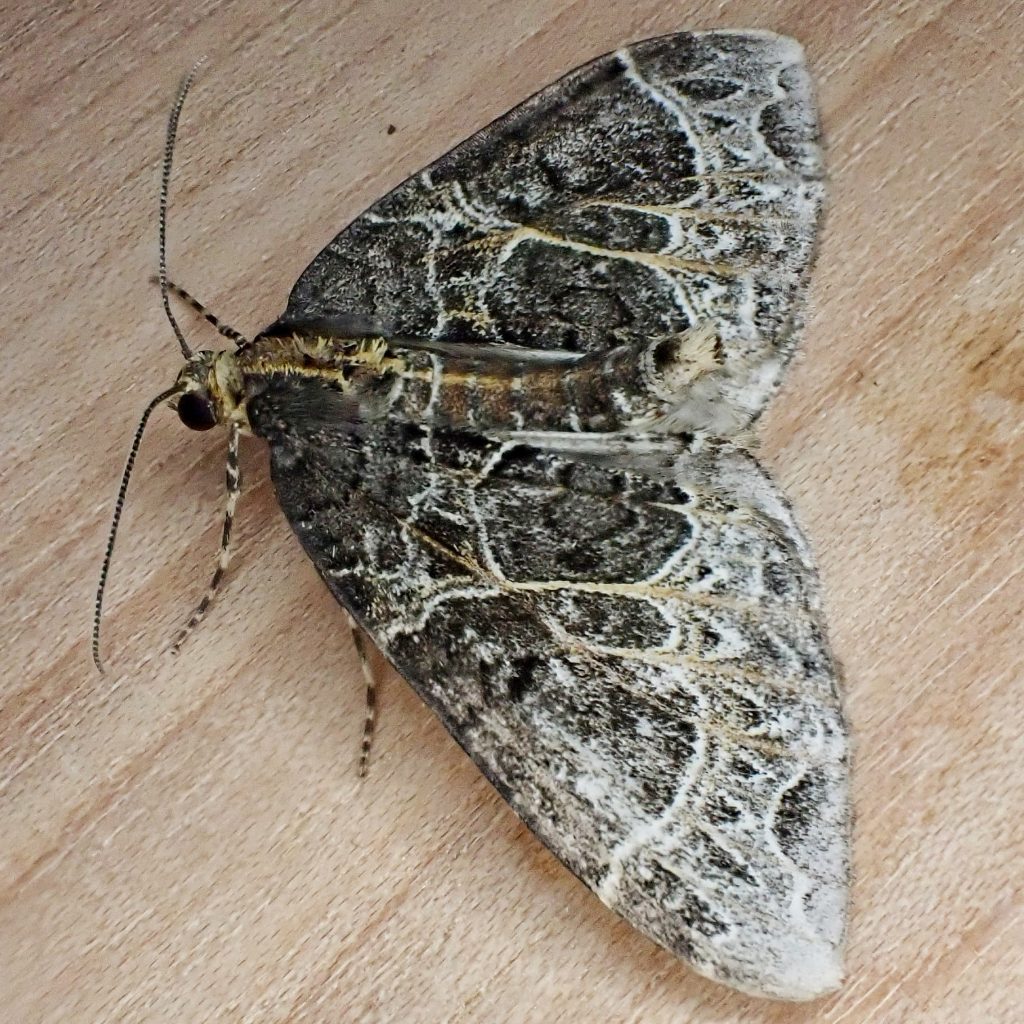
Description– Medium sized (fw length 14-16 mm) dark, brownish grey moth, with pale transverse and longitudinal lines; subterminal line smoothly curved and punctured by zigzag peaks of line brown; well defined and white bordered dark mark near fw apex; often perched with its abdomen curled upwards.
Similar species-There are too many superficially similar geometrids to list all of them here; Eulithis xylina and E. destinata have a lobed subterminal line, and lack zigzag markings between it and the margin; Epirrhoe alternata has more white, and a white hindwing; Xanthorhoe spp. lack defined black area near forewing apex.
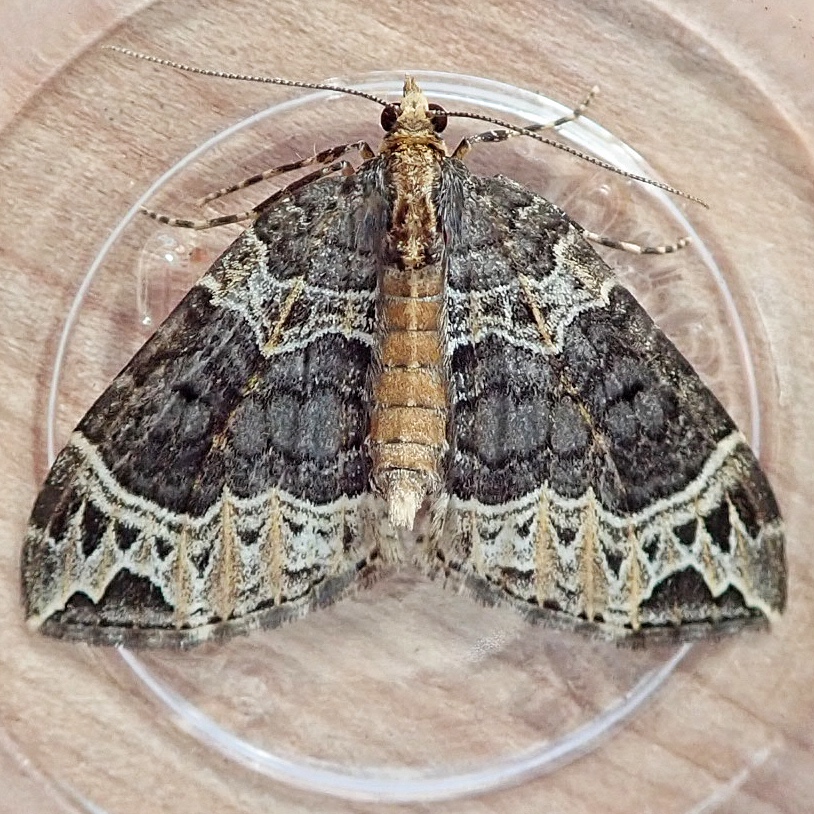
Habitat– Forest openings and mixed woodlands up to 6,000’ elevation.
Range-Northern Northern Hemisphere; region wide in appropriate habitat.
Eats-Larval hosts include willowherbs, fireweed, and Impatiens.
Eaten by-Anything that can catch them
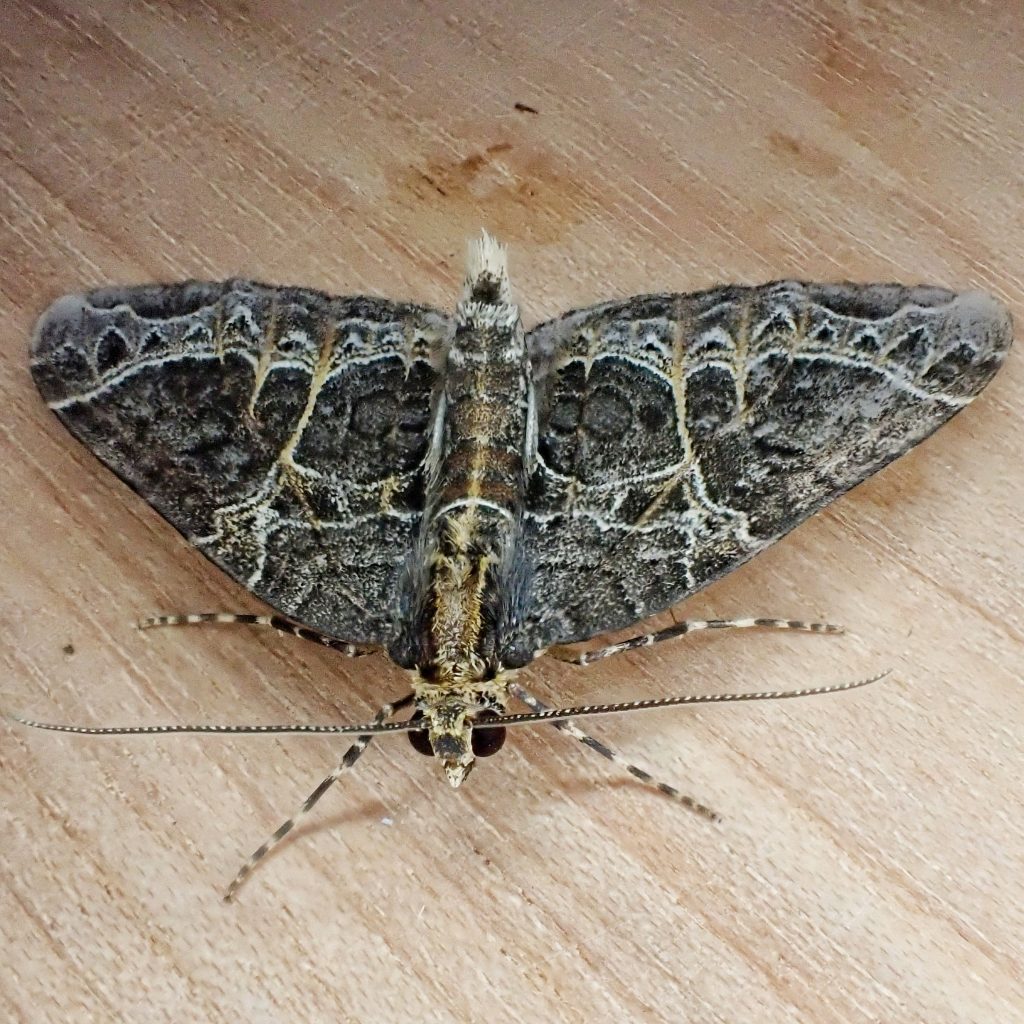
Reproduction-Bivoltine at lower elevations in our region, univoltine in the mountains.
Adults active– May to August
Etymology of names–Ecliptopera is from the Greek words for ‘failing to have a face’, which refers to the face being “…obliquely flat, the lower part produced into a short point.” The specific epithet silaceata is from the Latin for ‘yellow ochre’, which refers to the color of the scales in the sub basal and post median areas of the forewing. Phoenix comes from the upward curving abdomen, which apparently reminded someone of a rising phoenix.
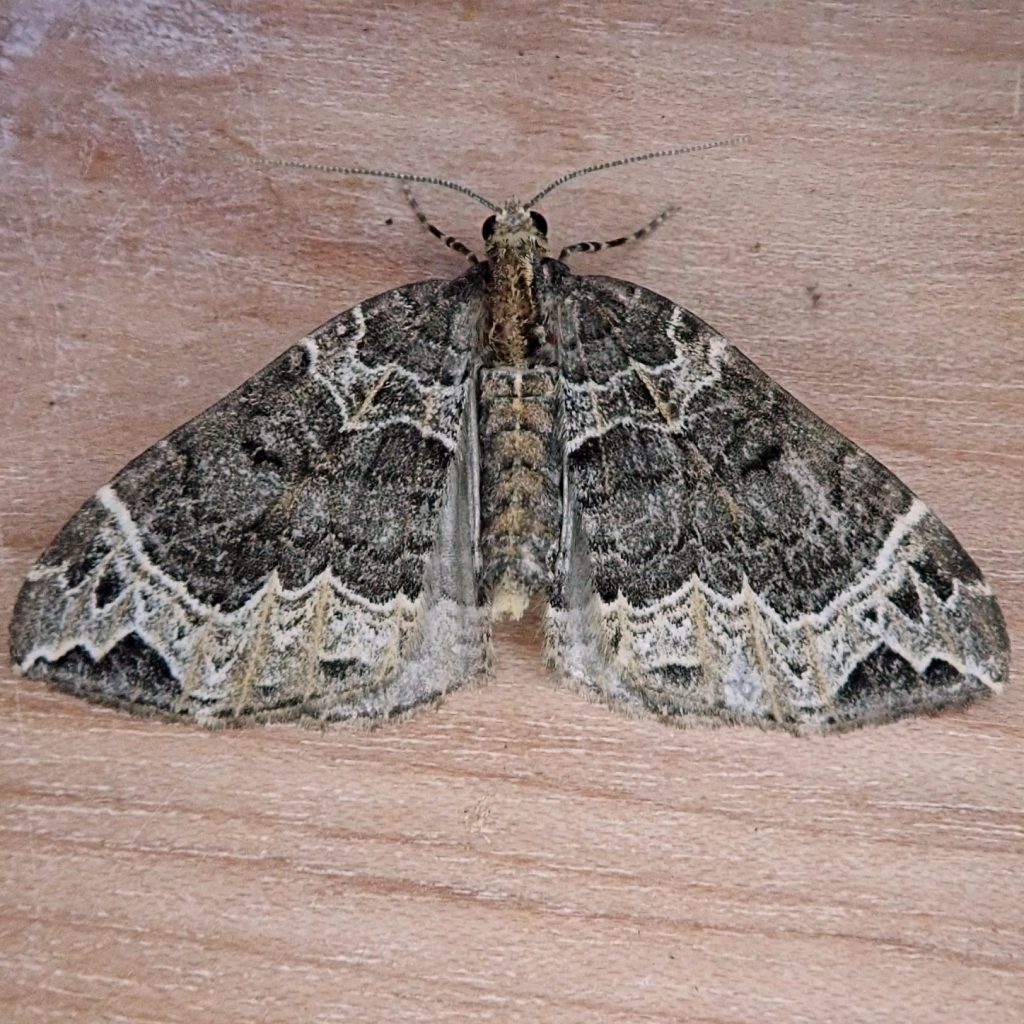
https://bugguide.net/node/view/135576
http://mothphotographersgroup.msstate.edu/species.php?hodges=7213&state=PNW
http://www.habitas.org.uk/priority/species.asp?item=5839
https://www.naturespot.org.uk/species/small-phoenix
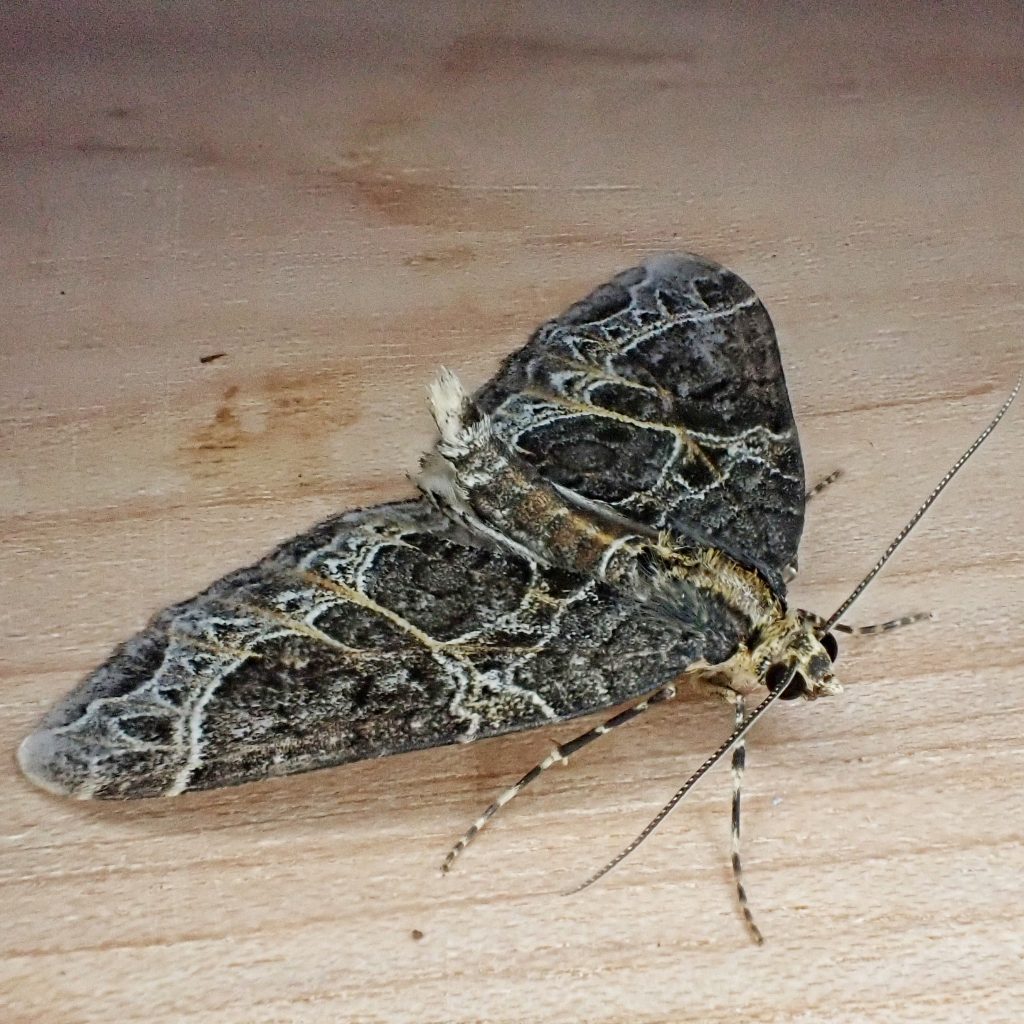
4 thoughts on “Ecliptopera silaceata (Small Phoenix Moth)”